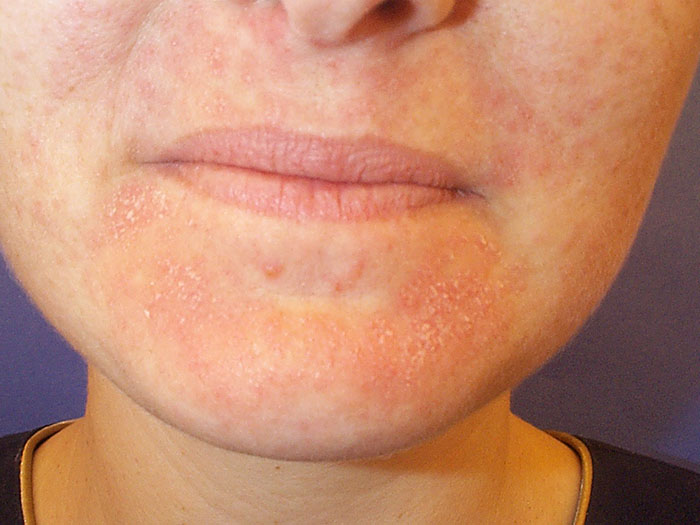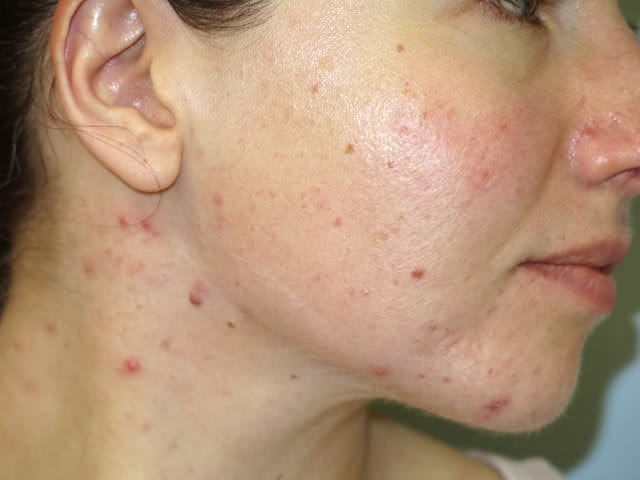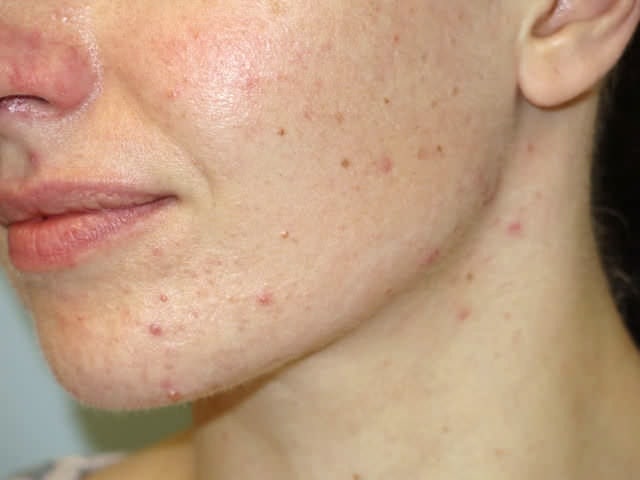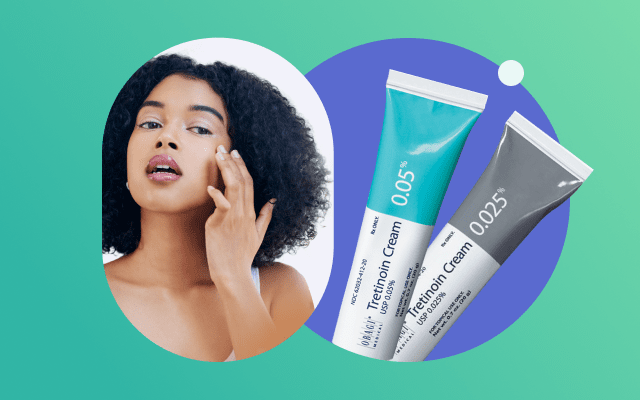Skin purging – What medications cause it and what to do about it?
Guide: Get an in-depth explanation of what skin purging is, what can cause it, how long it lasts and how to deal with it.
Table of Content:. purging? | How long does it last? | Can it be prevented/treated? | Retinol purge | Isotretinoin purge | Adapalene purge Benzoyl peroxide purge | Clindamycin purge | Azelaic Acid purge
Our commitment to producing high-quality content:
The information presented in this article is based on scientific research and the professional advice of our Content Medical Reviewers, who are experts in the field of Dermatology. How we write our content →
What is skin purging?
Skin purging is a non-medical term for a temporary reaction your skin developed to a specific ingredient. When you introduce a new product or prescription medication to your skin care routine, your skin needs time to adjust to it. Skin purging occurs due to an increase of skin cell turnover and some of the symptoms associated are redness, dryness, breakouts, flaking, and peeling.
If you need professional help to get rid of your acne, consult an online dermatologist.
What does skin purging look like?
Skin purging is characterized by the appearance of an increased number of pimples, whiteheads, blackheads, papules (a raised bump often caused by a blocked pore) and pustules (pus filled, inflamed spots). Skin purging is also associated with redness and dry, flaky or peeling skin.
What ingredients cause skin purging?
If you have sought treatment for acne, the last thing you want is for your skin to get worse when you start a treatment that is supposed to make things better; but in some instances this might happen. Some ingredients are more likely to cause this kind of problem than others, so we will now explore which ingredients have a higher risk of purging your skin, so if it happens, at least you know what to expect. Unless symptoms become too severe, you should continue with your treatment, get through “the purge” and wait for the results to show.
All prescription medications are required by health authorities to conduct formal clinical trials that study the safety and efficacy of the medicine. As part of these clinical trials, unwanted effects must also be recorded and communicated to patients on the patient information leaflet. After a medicine is launched, healthcare professionals and patients can report unwanted effects (side effects) to the regulatory authorities such as the FDA, MHRA and the EMEA. This way, unwanted clinical effects of medicines are well understood, and so any effect such as a worsening of acne (also referred to as “acne purging”) or other skin effects can be determined.
How can I consult a dermatologist if my acne products are not working?
If you have been using some acne medications and they are not working as they should or they are causing symptoms that are not considered “normal” you can consult a board-certified dermatologist through Miiskin. Consultation price is $59 and you will get an effective treatment plan for you acne in less than 2 business days.
How long does skin purging last?
Everyone’s skin is different, and since skin purging is not recognized as a medical term, this is a tricky question to answer. In general, it is suggested that skin purging can take 4-6 weeks1.
However, if what seems to be skin purging, is actually a known clinical side effect of an acne medicine, the side effects can be controlled by reducing the frequency or amount of product applied.
You should read the patient information leaflet carefully to know what to do if you experience side effects.
Can skin purging be prevented or treated?
Preventing a skin purge will depend on what the treatment is. In general it is a good idea to start any new treatment slowly and build it up over time so the skin can get used to it.
It is also a good idea to use a non-oily moisturiser in combination with any medication that causes skin dryness and irritation, to help rehydrate your skin.
Finally, do not pick or abrade the skin if it seems to be flaring up. Picking acne can only make it worse and risks more serious skin infections.
If symptoms are too severe, it may also be a good idea to stop the treatment for a short while and then restart it, so the skin can get used to the treatment.
What products or acne medications can cause skin purging?
Topical retinoids (such as tretinoin or retinol) are widely associated with skin purging. Retinoids are synthetic or natural derivatives of Vitamin A and they improve skin health in many ways. They stimulate collagen production, regulate skin cell turnover, increase blood flow, and decrease inflammation2.
Retinol skin purge
Anti-aging products containing retinol are known to cause the skin to purge. Beauty or cosmetic creams are not required to prove their effectiveness in the same way as medicines, so there is no formal assessment of documented side effects. This means it is harder to determine the facts about these products and skin purging. That being said, there are widespread reports of skin purging with retinol products. It is believed that these Vitamin A-derivatives stimulate collagen production and cell turnover in order to work, which is directly linked to skin purging.
What is retinization?
Retinization is a term associated with the use of topical retinoid treatments, such as retinol and adapalene (Differin) or oral (taken by mouth) isotretinoin3.
Retinization is described as the period during which the skin adapts to the retinoids and becomes dry, red and irritated. Not everyone experiences these side effects of retinoids (also known as retinol uglies) and it normally improves after four weeks.
In some cases, symptoms can be quite severe and it is necessary to discontinue product use. Retinization can be improved by using a gentle, non-oily moisturizer that will help rehydrate and soothe the skin.
Isotretinoin skin purge
The “Accutane (isotretinoin) purge” refers to a temporary worsening of acne that some individuals experience shortly after beginning isotretinoin treatment. This reaction is attributed to increased skin cell turnover, reduced oil production, and initial inflammation, which collectively bring underlying impurities to the surface. While not everyone undergoes this phase, those who do can expect it to be short-lived. To minimize symptoms, it is recommended starting Accutane with a lower dose, using antihistamines to minimize symptoms, maintaining a gentle skincare routine, staying hydrated, and avoiding alcohol, which can exacerbate inflammation. Understanding and preparing for this phase can help patients navigate the initial stages of Accutane treatment more comfortably.
Adapalene skin purge
Adapalene is a topical retinoid prescribed to treat mild to moderate acne. It is sold under the brand names Differin or Plixda in the U.S.A
Adapalene has an anti-inflammatory effect and an uncommon side effect related to skin purging, the so-called Differin purge6.
Some common side effects of Adapalene include dry skin, skin irritation, skin burning sensation and redness. This redness and irritation associated with the use of topical retinoids is also known as retinization and it normally improves after four weeks.
Can other acne treatments cause skin purging?
Does benzoyl peroxide purge skin?
A first-line treatment for mild acne are creams and gels containing benzoyl peroxide which are available without a prescription.
Benzoyl Peroxide works primarily by killing the bacteria associated with acne, but it is also slightly anti-inflammatory and mildly keratolytic, which means it helps exfoliate the skin.
Benzoyl Peroxide does not have any reported skin purging or flare-like side effects by which acne worsens, but it does take six to eight weeks to take effect.
A common side-effect of Benzoyl Peroxide is dry skin, redness, peeling and burning. These side effects could be seen as a kind of flare up, even though the acne itself is not known to worsen.
There are a number of prescription treatments that are applied directly to the skin that are used for mild to moderate acne (acne with more spots on the face and often spreading onto the body) which do have the known side effects that are like skin purging. Most treatments for acne require at least 4-8 weeks to start to show improvements.
Does clindamycin gel and benzoyl peroxide purge skin?
Topical Clindamycin Phosphate and Benzoyl Peroxide, an effective treatment for acne, is sold under the brand names Acanya, BenzaClin, Duac, Neuac, Onexton, Z-Clinz 10 and Z-Clinz 5.
This combination has an uncommon side effect of worsening acne and some common side effects of redness, peeling, dryness which could also seem like a worsening of the skin. This side effect could be considered a skin purging effect7.
Does azelaic acid cause skin purging?
Azelaic Acid, sold under the brand names Azelex, Finacea, and Finacea Plus is another prescription medication with an uncommon side effect of acne worsening and a common side effect of burning, itching and redness8.
Topical Clindamycin/Benzoyl Peroxide or Azelaic Acid do not cause an increased turnover of skin cells, therefore, the side effects these medications have should not be seen as real skin purging, even though the experience of worsening skin could be very similar.
Can oral antibiotics cause skin purging?
It is uncommon that oral antibiotics used to treat severe acne or widespread acne across the body, such as doxycycline, minocycline, lymecycline, Seysara, erythromycin and Trimethoprim cause skin purging.
This is because they work by stopping the growth of the bacteria commonly associated with acne and by reducing the concentration of free fatty acids in sebum, which causes spots.
These antibiotics may also have anti-inflammatory properties, but do not directly affect the rate of skin cell turnover.
When should I contact my healthcare about skin purging?
After you start the new treatment for your skin, it is important to keep a close eye on how things develop.
With all treatments for acne, you always need to give them at least 8 weeks and, in many cases, up to 6 months to see the full effect of the treatment.
If things get worse after you start a new treatment, you should speak to your doctor. Also consult your doctor if the problem continues beyond a few weeks.
If the new treatment is a medicine for acne, read the patient information leaflet. That will tell you of serious side effects to watch out for and so stop treatment immediately if it causes serious side effects.
Skin conditions and treatments
Articles written in collaboration with dermatologists
Facial treatment for seborrheic dermatitis
How to get rid of rosacea permanently?
How to calm a rosacea flare-up fast?
Spongiotic dermatitis: What is it and what is the best treatment?
A dermatologist’s guide to psoriasis medication
Article References:
1 https://www.healthline.com/health/beauty-skin-care/skin-purging
2 https://www.jaad.org/article/S0190-9622(98)70454-2/fulltext
3 https://www.fda.gov/
4 https://www.gov.uk/government/organisations/medicines-and-healthcare-products-regulatory-agency
5 https://www.ema.europa.eu/en
6 https://www.medicines.org.uk/emc/product/6470/smpc
7 https://www.medicines.org.uk/emc/product/6470/pil
8 https://www.medicines.org.uk/emc/product/920/smpc
9 https://www.medicines.org.uk/emc/product/6/smpc
10 https://www.medicines.org.uk/emc/product/285
11 https://en.wikipedia.org/wiki/Retinol
12 https://www.healthline.com/health/beauty-skin-care/skin-purging#how-long-does-purging-last









 Want a customized prescription for your skin or hair?
Want a customized prescription for your skin or hair?